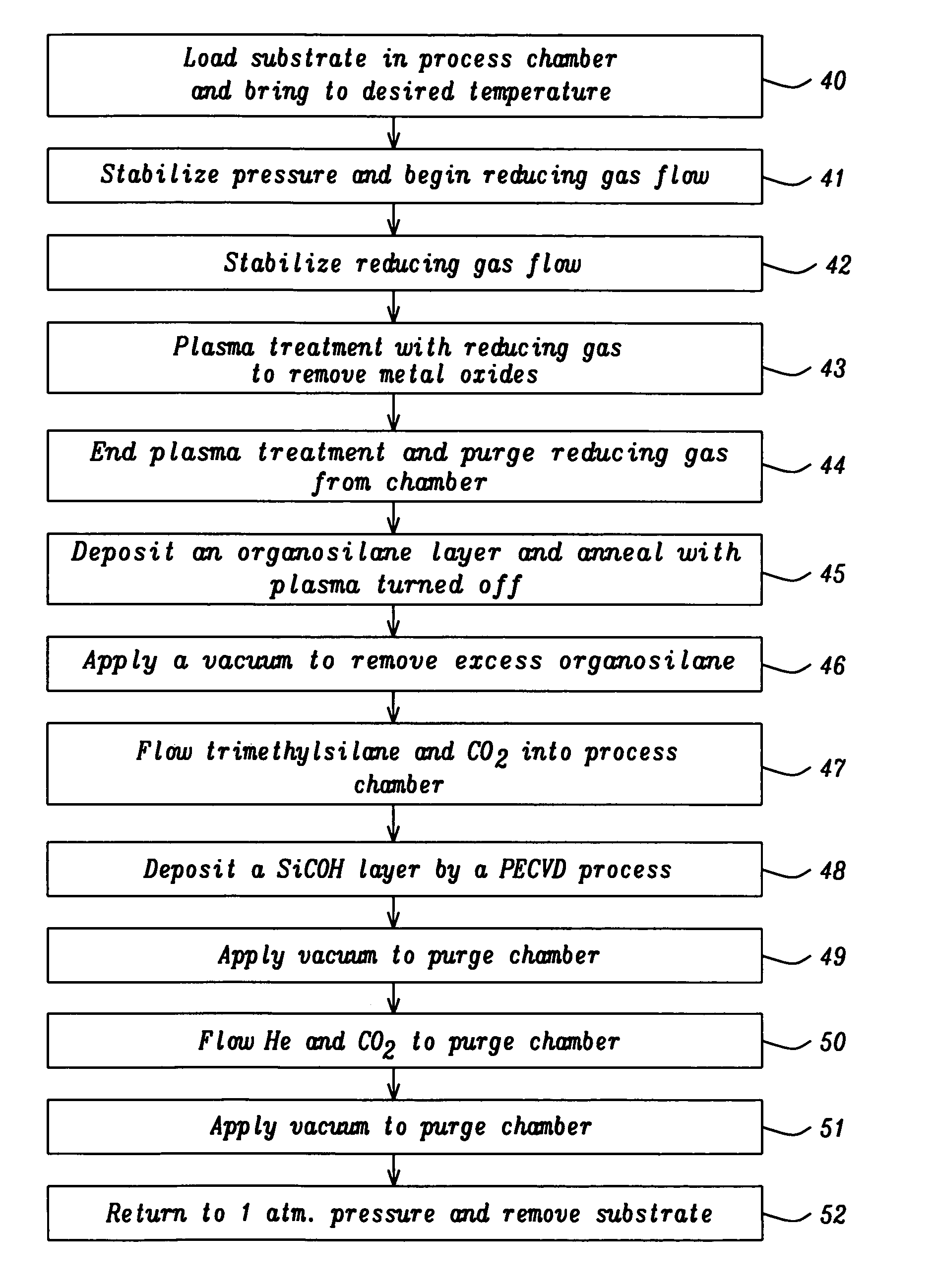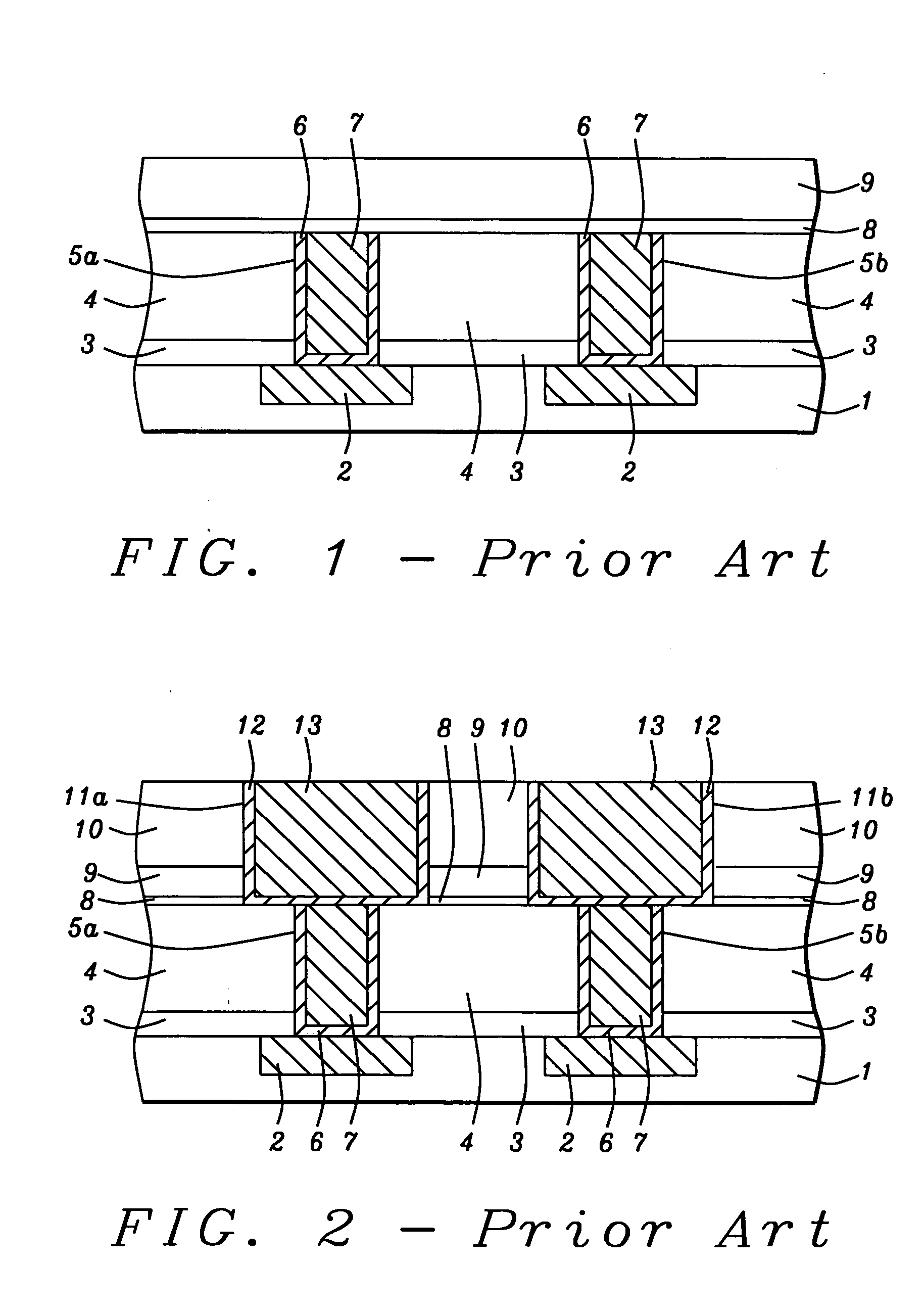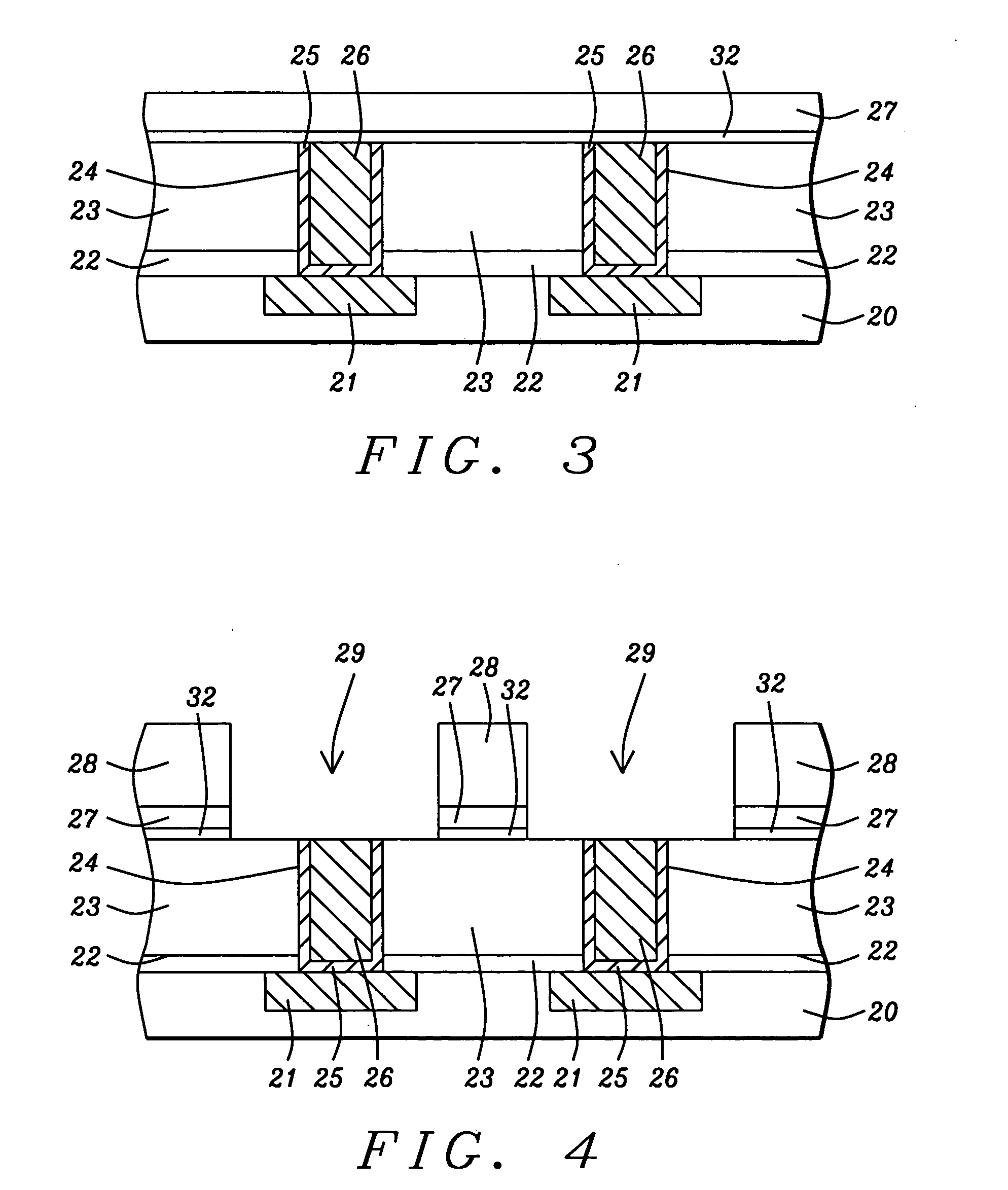Reliability improvement of SiOC etch with trimethylsilane gas passivation in Cu damascene interconnects
a technology of trimethylsilane and interconnects, which is applied in the direction of semiconductor devices, semiconductor/solid-state device details, electrical apparatus, etc., can solve the problems of poor wafer to wafer reliability control, defeat the purpose of deposited low k dielectric layers, and increase the cost of etching, so as to reduce leakage current
- Summary
- Abstract
- Description
- Claims
- Application Information
AI Technical Summary
Benefits of technology
Problems solved by technology
Method used
Image
Examples
second embodiment
[0036] Those skilled in the art will appreciate that a SiCOH etch stop layer deposited according to the present invention could also be formed on metal lines in a gap fill process (not shown). For example, a SiCOH etch stop layer formed according to the first or second embodiment may be deposited as a conformal layer on the top surfaces and sidewalls of etched metal lines and then a thicker dielectric layer such as fluorosilicate glass may be deposited on the SiCOH etch stop layer to fill the gaps between the metal lines as appreciated by those skilled in the art.
first embodiment
[0037] The drawings are provided by way of example and are not intended to limit the scope of the invention. A first embodiment is described in FIGS. 3-10. Referring to FIG. 3, a substrate 20 is provided that is typically monocrystalline silicon but also may be based on silicon-germanium, gallium-arsenide, or silicon-on-insulator technology. Substrate 20 usually contains active and passive devices (not shown). In one embodiment, the substrate 20 is also comprised of a conductive layer 21 that may be W, Al, Al / Cu or copper. The conductive layer 21 typically includes a plurality of metal lines and each metal line may be bounded on the sides and bottom by a diffusion barrier layer (not shown). A planarization method such as a chemical mechanical polish step is performed so that the conductive layer 21 is coplanar with the top surface of the substrate 20.
[0038] A stack of dielectric layers that include a first etch stop layer 22 and a first low k dielectric layer 23 are sequentially dep...
PUM
 Login to View More
Login to View More Abstract
Description
Claims
Application Information
 Login to View More
Login to View More - R&D
- Intellectual Property
- Life Sciences
- Materials
- Tech Scout
- Unparalleled Data Quality
- Higher Quality Content
- 60% Fewer Hallucinations
Browse by: Latest US Patents, China's latest patents, Technical Efficacy Thesaurus, Application Domain, Technology Topic, Popular Technical Reports.
© 2025 PatSnap. All rights reserved.Legal|Privacy policy|Modern Slavery Act Transparency Statement|Sitemap|About US| Contact US: help@patsnap.com



